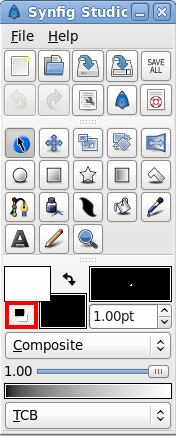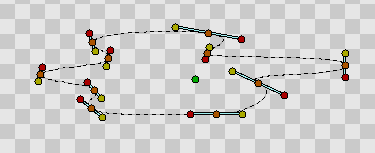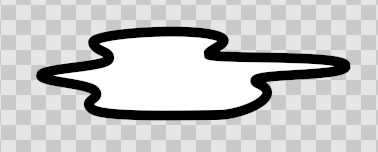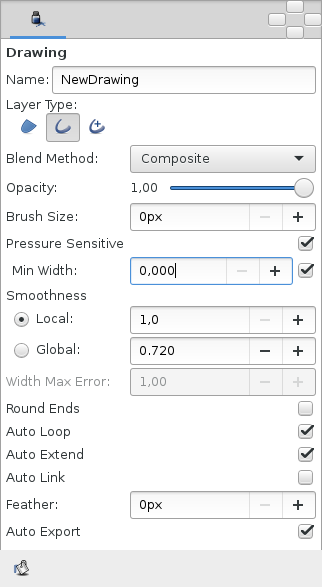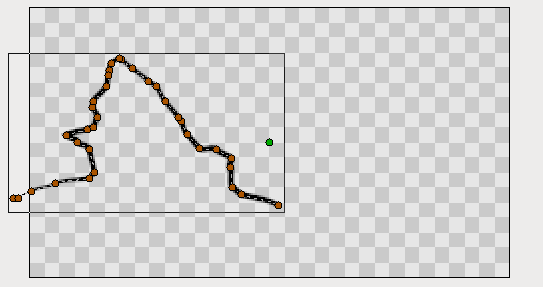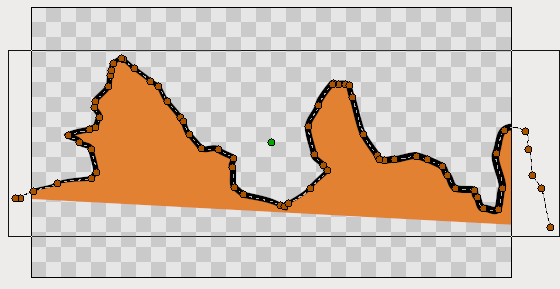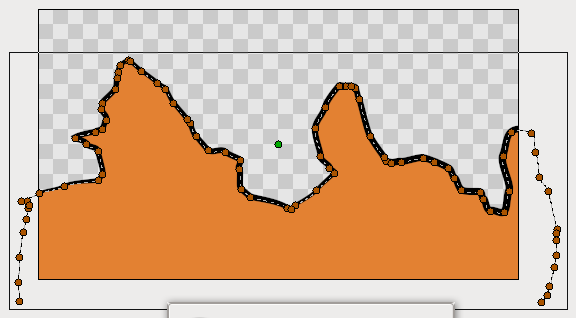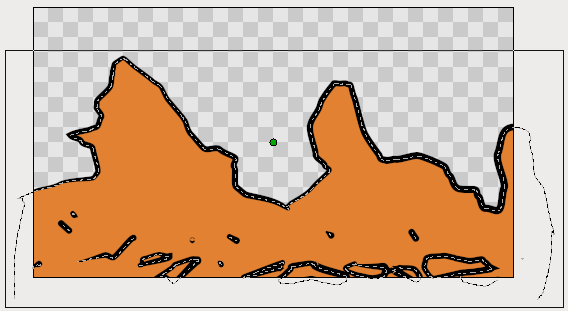Tutorials Basic
m (correct page info section, using {} instead of [] to avoid translated doc listing in english version) |
|||
| Line 1: | Line 1: | ||
<!-- Page info --> | <!-- Page info --> | ||
{{Title|Creando Formas}} | {{Title|Creando Formas}} | ||
| − | + | {{Category:Manual}} | |
| − | + | {{Category:Tutorials}} | |
| − | + | {{Category:Tutorials Basic}} | |
| − | + | {{Category:Updated}} | |
{{Navigation|Category:Manual|Doc:Flower Animation}} | {{Navigation|Category:Manual|Doc:Flower Animation}} | ||
<!-- Page info end --> | <!-- Page info end --> | ||
| − | |||
== Introducción == | == Introducción == | ||
Revision as of 14:18, 30 October 2011
|
Warning! This page contains outdated information. The release of Synfig Studio 0.64.0 introduced new terminology and this translated page needs to be updated according to original English text. You can help updating this page - see instructions here. Thank you! |
- Introduction
- Diving In
- Interface
- Artwork Import
- Artwork Construction
- Data Linking
- Advanced ...
- Animation
- Animation Techniques
- Output
- Configuring Synfig
- Appendix
| Basic Tutorials | Intermediate Tutorials |
| Advanced Tutorials | Video Tutoriales |
| Tips and Tricks
|
- Añadiendo Capas
- Bases de la Animación
- Lo más Básico sobre Máscaras
- Cómo empezar
- Cómo lo hago...
- Interfaz
Contents
Introducción
Las primitivas básicas como los círculos o los rectángulos estan bien, pero son muy poco flexibles. Así que, creemos formas más complejas, para hacer esto, usaremos la Herramienta BLine.
La Herramienta BLine
En Synfig, la estructura que describe una forma se llama BLine. Es una analogía de la "ruta" en otros programas, sólo que este caso es estrictamente una spline de hermite.
Antes de que comencemos con el tutorial BLine, vemos como funciona Synfig. Cuando pulsamos en BLine Tool/es, vemos que esos vértices del objeto seleccionado actualmente (si fue sólo uno) desaparecieron, pero la(s) capa(s) todavía permanece seleccionada en el Panel Capas. Esto es normal. Cualquier cosa que creemos con la Herramienta BLine será insertada encima de la capa seleccionada actualmente. Ten en la mente que si queremos insertar una forma, debemos seleccionar donde vamos a insertarla antes de ir a la Herramienta — cambiando la selección después se cambiará automáticamente a la Herramienta de Transformación.Ahora, seguimos y hacemos click en el botón "Restablecer Colores" en la esquina inferior izquierda del control de color FG/BG en la caja de herramientas. Esto nos devolverá a valor por defecto de negro y blanco. Además, establecemos el ancho de línea por defecto a algo bonito y delgado — 10pt estaría bien.
Después de que hayamos cambiado a la Herramienta BLine, miramos al Panel Opciones de Herramienta. Para asegurarnos de que sólo "Crear Región BLine", "Crear Perfil BLine" y "Enlace de Orígenes" han sido seleccionados.
Haciendo click con nuestro ratón en el canvas colocaremos los vértices. Mientras estamos colocando cada vértice, podemos arrastrar su tangente con el ratón. Haciendo esto una y otra vez, construiremos una BLine.
Debemos de acordarnos, que durante esta construcción, no hay nada que nos impida mover los vértices o tangentes a nuestro antojo. Si queremos eliminar un vértice, hacemos click derecho sobre él y los seleccionamos "Delete Vertex". Si queremos dividir las tangentes hacemos click derecho sobre una tangente y pulsamos "Split Tangents". Si queremos cerrar una BLine hacemos click derecho sobre el primer vértice y seleccionamos "Loop BLine".
Cuando hemos terminado de colocar los vértices, debemos salir del modo de construcción si queremos crear la capa(s) BLine; Hay dos modos de hacer esto:
- Cambiar a otra herramienta.
- Pulsar el botón "Create" en la parte inferior del Panel de Opciones de Herramienta (es el icono que parece un engranaje).
Por ahora, sólo tenemos que seguir y cambiar a la Herramienta Transform Tool, porque estamos usando la Herramienta BLine.
Editando BLines
Ok, we now have a nice pretty white region with a thick black outline. Since we checked "Create Region BLine" and "Create Outline BLine" in previous steps, you'll notice that there are two layers that we have created — the Outline and the Region in the Layers Panel. Despite the fact that they are two separate layers, their vertices parameter has already been linked — so you can select either one and move its ducks around and the other one will also change.
If you want to manipulate the vertices after you have created the layers, it is very easy to do so. Just click on one of the layers and have at it. If you want to remove a vertex, right click on it and hit "Remove Item (smart)". Want to insert a point somewhere? Right click on the segment where you want to insert something and hit "Insert item (smart)".
|
Note The only major difference between this normal editing mode and the construction mode is in how you split the tangents — in construction mode you right click on the tangent itself. In normal duck editing mode, you must right click on the vertex to which the tangents are attached. This could be considered a usability bug, and it will be resolved at some point.
|
This may appear to be leading to a mess of layers. And yes, if you aren't using the software properly, that is exactly what you will get. But there is a way to make this more sane. As mentioned in the previous tutorial, you can encapsulate layers into hierarchy.
One quick thing to mention before I finish up. You can change the width of an outline at each vertex. You do this by selecting the outline layer (NOTE: you must select the Outline Layer, the Region Layer has no width data) and tweaking with the width ducks. By default, these are masked. To show them, press Alt5 or click "Toggle width ducks" button at the top of the canvas window (the fifth one from the left). Repeat to hide them again. You can also see other things to mask via the Canvas Menu Caret: "View → Show/Hide Ducks".
Using tablet to draw shapes
If you have a graphic tablet you can use Draw Tool to create BLines.
Synfig Studio supports pressure sensitivity, but you need to configure it first. Go to "File → Input Devices..." from toolbox menu. In the Input dialog find your tablet's stylus device and set its mode to "Screen". Click "Save" and then "Close".
Now grab your stylus, create a new file and click on the Draw Tool button in the toolbox. Set the default line width value to be big enough — say, 15pt — otherwise you will not notice any pressure sensitivity effect. Choose brown as the default fill color.
|
Note Steps above should be done with the stylus of your tablet, not the mouse. Synfig Studio remembers settings for each input device independently. That's why if you set those options with your mouse device they will not have any effect when you switch to stylus.
|
In the Tool Options Panel, make sure that you have the same options as shown on the screenshot below.
Now let's draw some thing like a curvy mountain background. Start drawing a line from the left border to the middle of the canvas. Try to vary your stylus pressure while you are drawing. Stop near the center of the canvas. This is your first line. Notice the new outline layer created in the Layers Panel.
Point your stylus at the last duck of your new BLine and continue drawing to the right border of the canvas. When you finish, look at the Layers Panel again. There's still only one outline layer. Synfig Studio is smart enough to figure out that you don't need a new outline layer and properly extends the last one. You can extend the BLine from both ends, but if you start drawing from any other place of the canvas a new outline layer will be created. Though your first line will remain selected and nothing stops you from extending it later.
Back to our artwork. In the Tool Panel hit the button with the bucket icon to fill the outline we just created. A region layer will appear at the top of the layer we are working with. Select the outline layer and press the "Raise Layer" button in the layers panel to put the outline layer on top of the region.
Extend a line from both sides down to the corners of the canvas to make the fill appear at the bottom. Great.
Go ahead and add a few more lines on top of the filled area to give it a mountain-like look. If brown ducks are in your way, you can hide them by clicking the "Toggle vertex ducks" button at the top of the canvas window (the second one from the left).
|
Warning! Don't use Alt2 shortcut to turn off visibility of vertex ducks while you using Draw Tool. There's a bug that will cause Synfig Studio to hang.
|
This bug is fixed in the upcoming release (0.63.00).
Draw tool is great for drawing complex shapes, but you end up with a bunch of ducks, which are hard to manipulate with the Transform Tool in the way we described above. There are two solutions here.
First, you can increase the "Smooth" value in the Tool Options Dialog while using Draw Tool. That will reduce the count of vertices produced at drawing time, but will make your shape less detailed.
Second, you can use Smooth Move Tool to deform an existing shape. Go for it and click the Smooth Move Tool button in the toolbox. The trick about this tool is that it affects selected ducks only. Press and hold your left mouse button in an empty place of the canvas. Drag to create a selection box. Release the mouse button when you are done. Or just hit CtrlA to select all ducks. Now you can deform the selected segments of BLines. You can change the size of the influence area by tweaking "Radius" in the Tool Options Panel.
What about outline width? There is a Width Tool for that purpose. It is designed for increasing or decreasing the width of a line much like you would with a pencil on paper. Click the Width Tool button in the toolbox, move your stylus over the line you want to change, press and move the cursor back and forth along the line, like you are scratching something. The width of the outline will be increased at the places where you moved the cursor. If you want to decrease the width, just hold "Ctrl" while scratching. Easy!
If you don't want Width Ducks to be displayed, during usage of the Width Tool, just turn them off by pressing the "Toggle width ducks" button at the top of the canvas window.
|
Warning! Don't use Alt5 shortcut to turn off visibility of width ducks while you using Width Tool. There's a bug that will cause Synfig Studio to hang.
|
This bug is fixed in the upcoming release (0.63.00).
Other ways to create BLines
Is that all? Not yet. You can use Circle, Rectangle, Star and Polygon tools to create BLines too. Just check the "Create Outline BLine" and "Create Region BLine" options in the Tool Options Panel when using those tools.
Creating geometric primitive as BLine gives you a better control over it's shape and look. For example, if you want a deformed star, then you can use the Star Tool to create it as outline and region BLines and then use the Transform Tool to deform it.
Now you are ready for the last tutorial in this section. Hang on!
